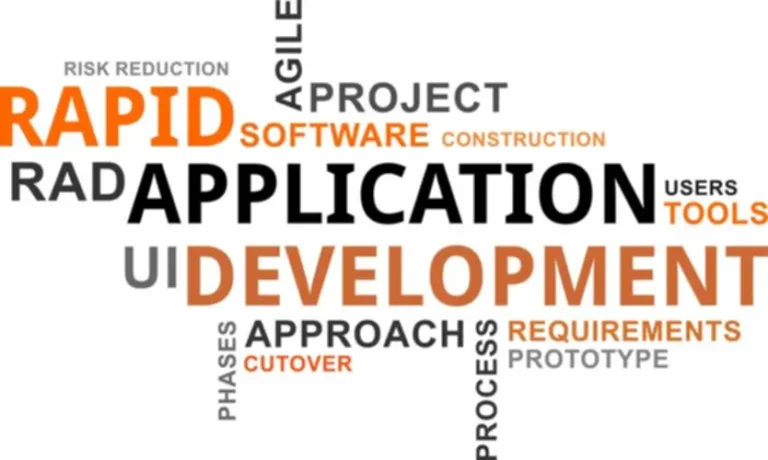CD is the journey of code via a deployment pipeline, where it turns into a deployable artifact. Feature flags are a way that can assist you to get new options out to prospects without having to wait till the whole characteristic is completed. This technique will allow you to ship the code right into a shared repository no much less than as quickly as a day, and you may deploy it at any time. However, if it’s not prepared for launch, you have ci cd maturity model the option to defer the choice for an additional day.
The Hurdles Of Steady Supply
You want an excellent testing strategy to ensure codes are well-tested and error-free. Therefore, we recommend you start with steady integration and incorporate continuous deployment later. Modern growth teams can deliver crucial software program updates quicker and extra efficiently with continuous integration and deployment.
The Advantages Of Steady Supply
In the primary degree, you could have CI, which builds and exams code adjustments to features and bug fixes. CD goes further and implements newly developed software program codes in the software program utility. The method helps cut back the cost, time,[citation needed] and threat of delivering modifications by allowing for more incremental updates to functions in production. A easy and repeatable deployment course of is essential for continuous supply.

Finest Practices For Implementing Continuous Delivery
A Continuous Delivery pipeline is very automated, significantly between code commits and deployments. The last step—deployment to production—typically needs guide approval as a safeguard despite the precise fact that the deployment itself is automated. This way, teams could make ultimate checks and guarantee everyone’s prepared, or that software releases at optimal instances or alongside advertising efforts. The implementation of continuous supply in software program improvement has many advantages. One of its major benefits is the automation of the whole course of, leading to improved productivity and code high quality. With repetitive tasks handled automatically, builders can give consideration to revolutionary aspects like creating new options somewhat than getting entangled in manual construct and deployment duties.

CI/CD works finest for initiatives with huge adjustments, corresponding to web apps or SaaS platforms, however it may not at all times suit tasks with strict regulatory necessities or complex infrastructure. It requires a growth team with an excellent understanding of automation and continuous supply practices. Traditional approaches might be more practical for legacy systems or small, one-time initiatives.
However, it’s essential to note within a CI/CD course of to perform upkeep during downtime intervals, also called the non-critical hour. Don’t take the system down throughout peak visitors instances to replace code modifications. This contains not just code but additionally databases, configuration information and scripts, facilitating a seamless transition between environments through the delivery pipeline. Continuous Delivery and Continuous Integration are practices throughout the broader DevOps movement that aim to improve and streamline software growth. Although they share a standard goal of automating elements of the event course of, they give consideration to different areas.
Continuous Delivery’s guide step is the reply for organizations that must balance velocity and reliability; it works nicely in environments the place stability and coordination with business processes are essential. Financial institutions and healthcare providers usually prefer Continuous Delivery due to the critical nature of their software. NOT EASILY IMPLEMENTED IF NEW DEPLOYMENT IS DATABASE DEPENDENT.Probably probably the most difficult enterprise when implementing Blue/Green Deployment or Canary Release is managing the database during the course of. If the appliance interacts with the database in a brand new means or if database schema is being modified in any way then the deployment process turn into more complex. In order to support the brand new database schemas for the most recent model you need to first change the database schema to support both the old and new model simultaneously.
- The difference between continuous delivery and continuous deployment is the presence of a handbook approval to replace to manufacturing.
- For those looking at web-based repository management solutions; GitLab presents supply code management along with continuous integration and deployment features.
- Continuous supply works by automating the software program release process by way of a sequence of levels together with building, testing, and deploying code adjustments.
- In other words, you should ensure that any adjustments launched go through the pipeline and that this pipeline is the only means for code to be released into the production surroundings.
- To sum up, not each CI/CD course of could have all these checks but it’s value remembering that continuous testing by way of automation is a key component of continuous integration and continuous supply.
In the ultimate stage, there’s a last human examine after which a push to deployment. Continuous supply is an extension of steady integration because it routinely deploys all code changes to a testing and/or manufacturing environment after the construct stage. When staff members know that they’re working on a completely clear project where every new line of code that they introduce might be completely tested, the accountability of your growth team is boosted as nicely. CDE, an integral aspect of DevOps, goals to minimize the friction factors that are inherent in software deployment or launch processes. By automating every of the steps for construct deployments, it ensures protected code release.

It is the trusted useful resource for safety professionals who want to take care of regulatory compliance for their teams and organizations. One of the primary variations between traditional deployment and steady deployment is how you go about creating a deployable artifact. With traditional deployments, your code will get deployed to manufacturing at set intervals, such as once per week or once per thirty days. Continuous supply doesn’t all the time mean deploying daily — somewhat, it implies companies will have the flexibility to simply roll again defective releases should issues arise. This means, regardless of how giant or small a release could also be, users continue to expertise constantly prime quality and enhanced functionality over time. Continuous deployment is a wonderful method to speed up the feedback loop along with your prospects and take stress off the team as there isn’t a “launch day” anymore.
However, these steady development practices differ in how they facilitate an accelerated time to market. Along with the new software supply system got here new software growth methodologies like agile improvement. Rather than long, comprehensive improvement projects spanning months, software program improvement cycles at the second are shorter, with sooner and more frequent releases. This new methodology allowed software program developers to ship crucial updates rapidly and efficiently.
First, builders commit code work right into a source management server, which notifies the continuous integration server of the new commits. Then, the commits are transferred to a workspace within the CI server, where the commits are built, analyzed, and examined for defects. The software program product growth course of is becoming more and more complicated. It is rare for software program engineers to work alone to develop new features or repair bugs. Furthermore, varied teams contribute to the completion of the product in a type of assembly line.
Continuous delivery works by automating the software program launch course of through a sequence of levels including building, testing, and deploying code changes. This process begins with developers integrating their updates or new options into a shared repository regularly. Each change is then mechanically constructed and tested for errors to ensure that the software program is at all times in a deployable state. With CI/CD, you are better equipped to maintain up proactive communication with suppliers since you’re continuously integrating and deploying their applied sciences, catching issues earlier and often needing particular assist. CI/CD lets you shortly reply to customers’ needs by releasing updates and features based on real-time feedback.
With a CI/CD improvement course of, teams prioritize proposed changes as they come in, engaged on areas that have the largest profit to the organization. Each space is, by definition, a smaller part compared to a Waterfall model change. Teams can plug the code adjustments into the prevailing code after which perform more particular performance and integration checks, making certain that the new code does not have any undesirable downstream impacts. The only disadvantage of implementing CI is that getting started with CI/CD requires each development teams and operational groups to debate what they want, how it’s executed, and the applied sciences they’ll need.
Transform Your Business With AI Software Development Solutions https://www.globalcloudteam.com/ — be successful, be the first!

